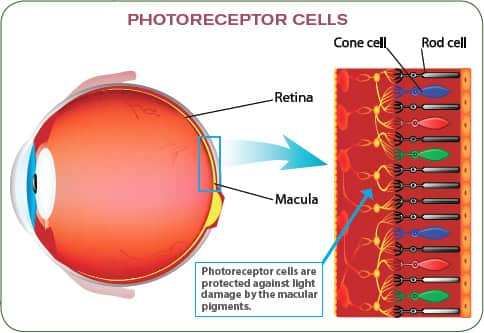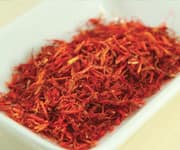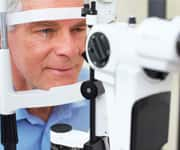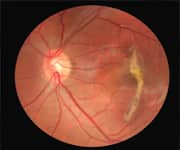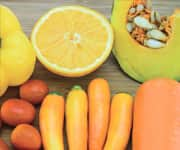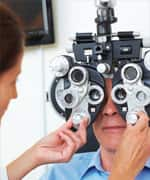Dealing with fibrocystic breast disease reduces the risk for breast cancer.
Breast cancer is a major fear for many women these days. The fear comes from the fact that many have watched someone close to them succumb to this disease and/or its treatment. Fortunately, there is much that can be done through diet and lifestyle to dramatically reduce the risk of breast cancer.
One of the risk factors for breast cancer is fibrocystic breast disease (FBD).
Though it is not as significant a factor as the major breast cancer risk factors, family history, early onset of menstruation (menarche), and late or no first pregnancy. It does carry with it increased risk and is a major reason why many women are subjected to mammograms as the lumps of FBD often cannot be easily distinguished from breast cancer. FBD does provide some additional insight on how a woman can reduce her risk of breast cancer.
The Importance of Dietary Fiber and Probiotics in Breast Health
Breast disease, both breast cancer and FBD, has been linked to low fiber diet and constipation. In one interesting study published over 40 years ago in the medical journal The Lancet, researchers noted an association between abnormal cell structure from breast cells in nipple aspirates of breast fluid and the frequency of bowel movements; women that had fewer than three bowel movements per week had a risk of FBD that was 4.5 times greater than women having at least one a day.
This association is probably due to the absorption of gut-derived toxins and a less than ideal bacterial flora in the large intestine transforming various toxic metabolites including carcinogens and mutagens. The take a way message is to promote effective elimination and detoxification by keeping things moving. A high fiber diet is critical in this goal.
One of the key ways in which the body gets rid of toxic chemicals as well as hormones like estrogen is by attaching glucuronic acid to them in the liver and then excreting this complex in the bile. Beta-glucuronidase is a bacterial enzyme that uncouples (breaks) the bond between the excreted estrogen and glucuronic acid. When beta-glucoronidase breaks the bond, the freed estrogen is available to be reabsorbed back into the body instead of being excreted. An elevated beta-glucuronidase activity is associated with an increased risk for various cancers, particularly hormone-dependent cancers like breast and prostate cancer as well as in colon cancer.
There are some very easy ways to reduce the activity of this bacterial enzyme and increase the excretion of estrogen. A very simple, yet effective way is to increase the intake of high fiber foods, especially vegetables and legumes. Women on a vegetarian diet excrete two to three times more estrogens than women on an omnivorous diet who also reabsorb more estrogens. Furthermore, omnivorous women have 50 percent higher average level of free estrogen reabsorbed from the intestinal tract. This difference is most likely due to the higher fiber intake of the vegetarian diet.
A higher intake of dietary fiber is associated with a more favorable gut flora. In women with FBD or concerned about breast cancer, recommending a high quality probiotic is very much indicated. Probiotic supplementation has been shown to lower the activity of beta-glucuronidase and may also help improve bowel function as well. Two very important goals in promoting breast health. The recommended dosage is 5 to 12 billion colony-forming units (CFU) of Lactobacillus and/or Bifidobacteria sp. daily.
Increase Phytoestrogens Vegetarian diets are also high in “phytoestrogens” that are able to bind to the same cell receptors as the estrogen your body produces. That’s a good thing, because when phytoestrogens occupy the “parking places,” estrogen can’t produce effects on cells. By competing with estrogen, phytoestrogen causes a drop in estrogen effects, and are thus sometimes called antiestrogens. Great sources of phytoestrogens include soy and soy foods, ground flaxseeds, and nuts and seeds. In fact, taking 1 tablespoon of ground flaxseeds daily is a very good recommendation for breast cancer prevention and breast health.
Fish Oils
Fish oils provide the long chain omega-3 fatty acids EPA and DHA. Women with the highest ratio of the long-chain omega-3 fatty acids EPA and DHA to omega-6 fatty acids (the omega-3:omege-6 ratio) had a 67 percent reduced risk of breast cancer making it one of the most powerful nutritional factors in preventing breast cancer. Take 1,000 to 3,000 mg of EPA+DHA from a high quality fish oils.
Cabbage Family Vegetables
Cabbage family vegetables such as broccoli, cauliflower, cabbage and kale contain anticancer phytochemicals known as glucosinolates that are potent stimulators of natural detoxifying enzymes in the body. Studies have shown that increasing the intake of cabbage family vegetables or taking the chief glucosinolates indole-3-carbinol (I3C) or DIM as a dietary supplement significantly increased the conversion of estrogen from cancer-producing forms to non-toxic breakdown products. Adding one or two servings daily of cooked cruciferous vegetables to the diet or taking supplements containing IC3 (400 mg daily) or DIM (2 mg/kg/day) shifts the ratio from bad to good estrogen breakdown products.
Vitex Agnus-Castus (chasteberry)
One of the most useful herbal remedies for breast health is vitex. The evidence in the treatment of FBD has been reported in both randomized and non-randomized studies. In one study, 1,634 women with FBD after three months of treatment with vitex, 81 percent of patients rated vitex as a good or very good treatment for FBD. The use of vitex for women is often reserved for those who are also showing other signs of PMS (mood swings, depression, irritability, etc.). The usual dosage of chaste berry extract (often standardized to contain 0.5 percent agnuside) in tablet or capsule form is 175 to 225 mg daily.
Final Comment
Another key recommendation for breast health is to drink more green tea or take a green tea extract. Population-based studies have shown green tea consumption reduces breast cancer risk. For example, studies have suggested that breast cancer rates are lower in Japan in part because people there typically drink about three cups of green tea daily. To achieve the same degree of protection from supplements containing green tea extract would mean taking a daily dose of 300 to 400 milligrams.







